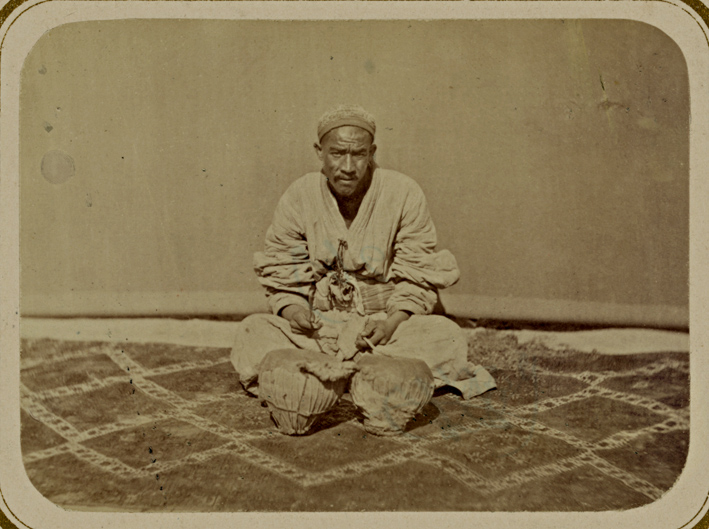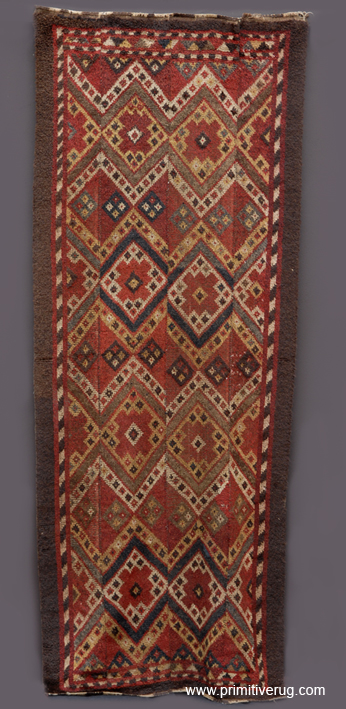Uzbek Julkhirs Samarkand The Turkestan Album 1871 - 1872
Julkhirs were woven by semi nomadic Uzbeks and traded at the markets in Bukhara and Samarkand.2 Nineteenth Century Julkhirs from Uzbekistan are rare, harsh use on the ground and floor as seating meant that the long shaggy pile of Julkhirs rugs became threadbare quickly. In 1944 and 1946when Moshkova visited the Turkmen Uzbeks of the Nurata basin no new Julkhirs were found and older examples were mostly threadbare.3 Nineteenth century photographs provide tangible evidence of how julkhirs primitive rugs were used. The Library of Congress in Washington houses the collections of The Turkestan Albums 1871 – 1872 and Sergei Mikhailovich Prokudin-Gorskii who also photographed life in Uzbekistan between 1907 and 1915. Often Julkhirs are referred to as sleeping or bedding rugs – these Samarkand Julkhirs were used as seating rugs on the floor or the ground alongside other flatwoven rugs, pile rugs, and carpets. Photographic evidence provides a snapshot into the daily use of julkhirs rugs in their original setting.
IMAGE of musician seated on Julkhirs; Library of Congress, Prints & Photographs Division, Turkestan Album Collection, Reproduction Number: LC-DIG-ppmsca-14711
1. Moshkova V. G. Carpets of the People of Central Asia (George O’Bannon, Arizona Lithographers Tucson, Arizona, 1996) 83 (ref Semenov 131 Dudin 132)
2. ibid., p .112

